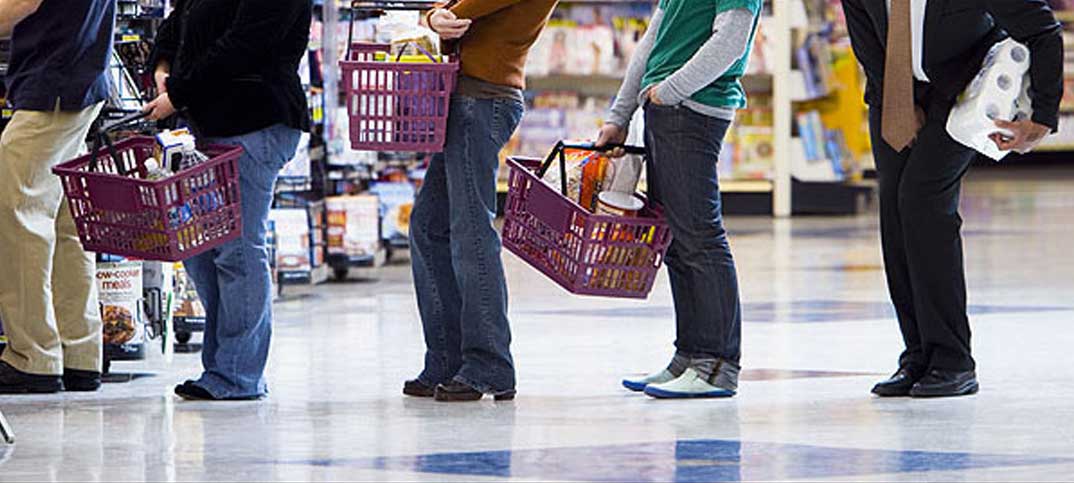Last week, the IGD held its annual Convenience Retail Summit. From growth prospects to identifying shoppers, here’s what we learned on the day.
- Convenience retail will continue to grow
Although it was forecasted that by 2021 one in eight pounds will be spent in a discounter, IGD predicted convenience stores will still be the second-biggest channel in the grocery sector after supermarkets.

- Retailers will face new challenges
“Convenience is not confined to the convenience channel,” said Tim Billson, senior retail analyst at IGD. “This is becoming a threat.”
Ongoing challenges, he said, included fightback from the multiples and the rise of discounters, while new challenges would stem from tech companies such as Amazon and Uber.

- The opportunity landscape is changing
Diversity, community and foodservice were among the growing opportunities named by Billson.
The owner of a newly-opened Bmorelocal store in South Wales recently told Retail Express that she would be stocking a range of products imported from China, to drive footfall from the nearby population of Chinese students.
“We’re striving to retain the personal touch that the multiples are lacking,” she said.
Billson described this personal touch as “unique to convenience stores”.

- Store layout remains vital
“Other channels are fighting to steal a share of the growing convenience market,” said Michael Freedman, IGD’s senior shopper insight manager.
“It’s important to stay convenient for your locals. While shoppers are more satisfied with discounters and supermarkets in terms of value and range, they are using the convenience channel to do their top-up shops as quickly as possible. Our research tells us that store layouts aren’t helping them to do this.”

- Quality trumps value
According to IGD’s research, today’s shoppers are generally prioritising quality over saving money.
“There are three key areas that shoppers use to determine that an item is high quality,” Freedman said. “These are brand name, whether it’s been freshly prepared and whether it was locally produced or made in Britain.”

- Shoppers fall into six categories
“You will only drive shopper loyalty if you tailor solutions to them,” Freedman said. “We’ve uncovered six groups that shoppers fit into.”
These were:
Brand purists (26%)
“Are you making it possible for these shoppers to find the best deals?” Freedman said. “Emotional connections are key here.”
Savings Seekers (18%)
Price is the most important driver for these shoppers. Visibly marketing your promotions and best deals is crucial to win their spending power.
Discounter Enthusiasts (17%)
While these shoppers are concerned with how much they spend on groceries, they are not willing to compromise on quality.
Technology Adopters (16%)
This group has the highest interest in using technology for food and grocery shopping. These are also the most frequent shoppers.
Habitual Loyalists (13%)
The ‘loyalists’ like to plan their shopping, and tend to buy familiar products.
Foodie adventurists (10%)
“These shoppers are looking for inspiration to create their evening meals,” Freedman said, and suggested following the lead of a Cooperative in Copenhagen that sells bags containing the ingredients needed to follow a specific recipe.

- New rivals can be learned from
Tech-centric food services such as Deliveroo and Hello Fresh are hugely successful in parts of the country, with the market set for more competition now that Amazon and Uber have thrown their hats into the ring.
Rather than fearing the potential damaging effects of these services, Billson advised retailers to learn from them and embrace technology to offer something new and unique. He pointed to retailers in France whose stores were complete with vending machines that dispersed hot, fresh baguettes; and a Swedish convenience store where all purchases were made using an app that scanned barcodes.

- Multi-mission shopping should be encouraged
“Make missions possible,” said Freedman. “Direct shoppers to what they’re looking for – and keep missions separate, such as ‘food for now’ and ‘food for tonight’.”
However, he said that retailers should still try to exploit cross-category opportunities.

- Designated seating could unlock food-to-go
Declan Ralph, retail development director at BWG Foods, said that it was important for retailers to cover food options for the entire day – so providing individual offerings for breakfast, lunch and dinner was growing increasingly important.
“If you’re serious about selling food, put seats in,” he advised. “Let shoppers enjoy it in-store.”

- Understanding shoppers is a top opportunity
Retailers who understand their shoppers, utilise their space to their best ability and offer the right range are on to a winner, according to IGD.
The three main missions for convenience store shoppers are top-ups, distress shops and finding a meal for the evening.
A massive 92% of shoppers visiting convenience stores this year will be on a top-up mission. Shoppers are no longer visiting stores with specific items in mind, however, which IGD predicts will prompt impulse sales to grow to 81%.





Comments
This article doesn't have any comments yet, be the first!